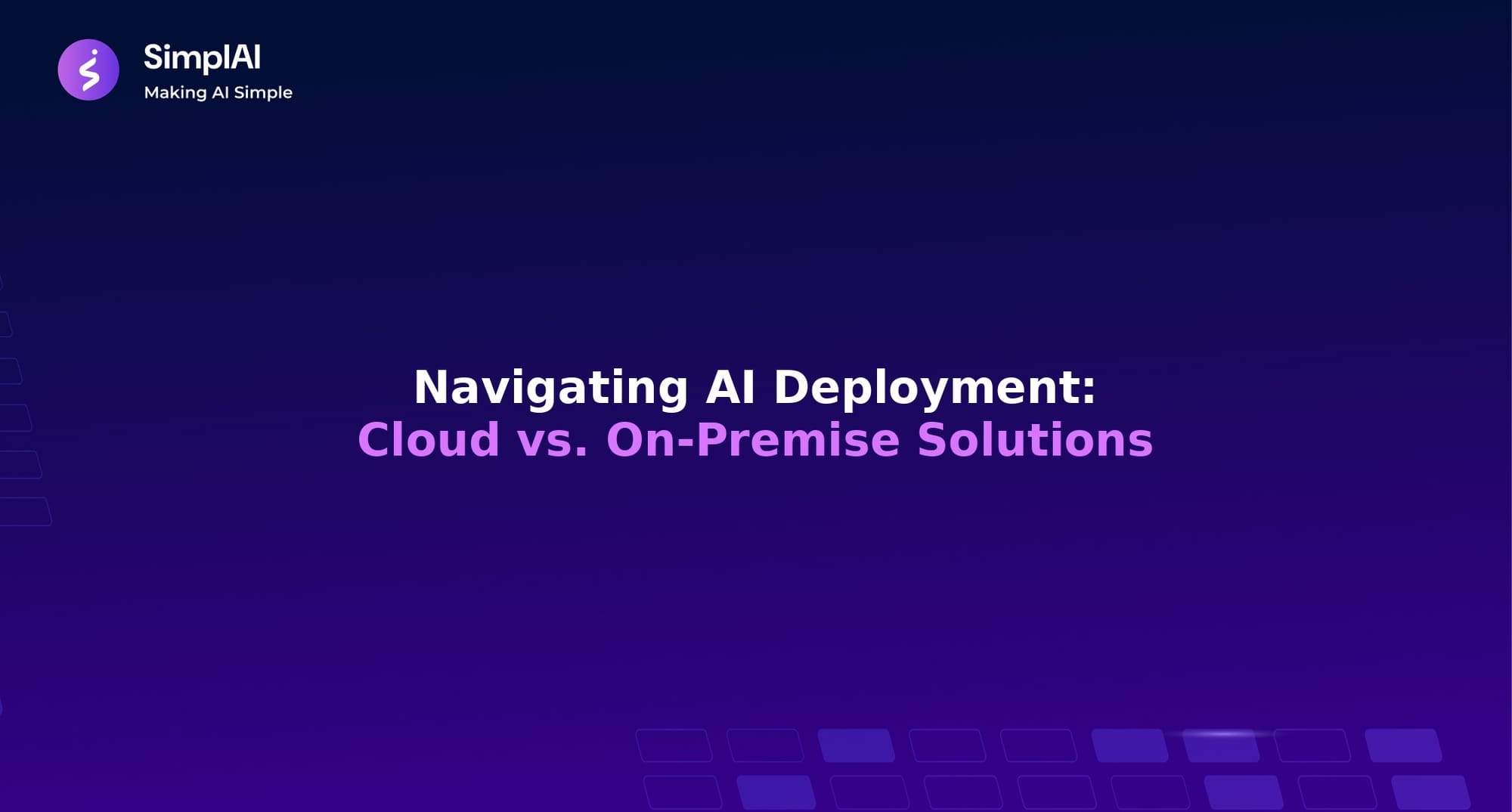Deploying AI Solutions: Cloud vs. On-Premise Environments

Artificial Intelligence (AI) is revolutionizing the way businesses operate. As companies increasingly adopt AI technologies to improve efficiency and enhance decision-making, significant questions arise: Should your organization invest in cloud AI solutions or stick with on-premise infrastructure? In the age of rapid technological advancements and increasing complexities of AI workloads, this decision is not one to be taken lightly. Understanding the nuances of AI deployment strategies and carefully evaluating the cloud vs on-premise AI solutions that best serve your organization is paramount.

Understanding Cloud AI Solutions
Cloud AI integrates advanced technologies within cloud computing platforms, providing businesses with access to powerful AI-driven applications without the overhead of maintaining their data centers. Providers like AWS, Google Cloud, and Microsoft Azure offer scalable, cost-effective services designed to facilitate the experimentation and deployment of AI applications.
One notable benefit is flexibility: businesses only pay for what they use, allowing easy scaling according to demand. This is particularly useful in fast-paced environments where projects can evolve rapidly, reducing the risk of significant upfront investments—a critical consideration for budget-conscious enterprises. Furthermore, cloud solutions mitigate the financial impact of unsuccessful AI initiatives, as businesses can cease operations without the need to offload expensive hardware.
The Case for On-Premise AI Solutions
Unlike their cloud counterparts, on-premise AI systems are hosted and managed within an organization’s infrastructure. This gives businesses control over their data, which is vital for industries with stringent regulatory compliance requirements. Companies may choose on-premise solutions due to data sovereignty issues, ensuring sensitive information remains localized, hence maintaining higher levels of security and customization.
However, the initial costs associated with on-premise solutions can be significantly higher. Organizations must invest in physical hardware, ongoing maintenance, and the IT expertise necessary to manage their infrastructure securely. Failure in on-premise AI initiatives can have enduring financial implications, due to the substantial upfront investments involved.
Key Considerations for Deployment
As you assess whether to adopt cloud vs on-premise AI solutions, consider the following:
1. Scalability Needs
In environments where workloads fluctuate, cloud solutions shine due to their elastic nature. Conversely, stable workloads may benefit from on-premise setups which provide tailored performance.
2. Data Sensitivity and Compliance
For organizations in regulated sectors, on-premise solutions often provide better control and oversight necessary to meet compliance. In contrast, less sensitive data can benefit from the rapid scalability offered by the cloud.
3. Cost Implications
While cloud solutions offer cost savings in terms of operation, long-term costs can accumulate. Traditional on-premise setups involve high initial investments, but they often facilitate better control over budget in the long run if the workload is steady.
4. Technical Skills and Resource Availability
Do your internal IT teams have the necessary expertise to manage AI infrastructure? Cloud services can offload some responsibilities, making them attractive for organizations with limited IT resources.
5. Performance and Latency
Cloud performance can vary depending on data transfer speeds and connectivity. For latency-sensitive applications, on-premise solutions might better meet the requirements of real-time processing.
The Hybrid Approach: A Balanced Solution
Increasingly, organizations are opting for a hybrid deployment, combining the benefits of both cloud and on-premise systems. This approach enables businesses to leverage cloud scalability for less sensitive tasks while keeping sensitive information on-premise. For example, Volkswagen uses a hybrid strategy to develop autonomous vehicles, balancing on-prem infrastructure for sensitive data with cloud resources for large-scale simulations.
Conclusion: Making the Right Choice for Your Organization
Choosing between cloud and on-premise AI deployments is not a one-size-fits-all decision. By understanding your operational needs, regulatory pressures, budget constraints, and the specific performance requirements of your business, you can make a more informed decision.
As we continue to navigate the exciting possibilities of AI, the question remains: Are you ready to embrace the potential of AI deployment strategies tailored to your business's unique needs? At SimplAI, we specialize in simplifying the complexities of AI applications, providing innovative solutions that can seamlessly integrate with your chosen infrastructure.
Explore how SimplAI can help you build complex, high-accuracy AI applications today!

